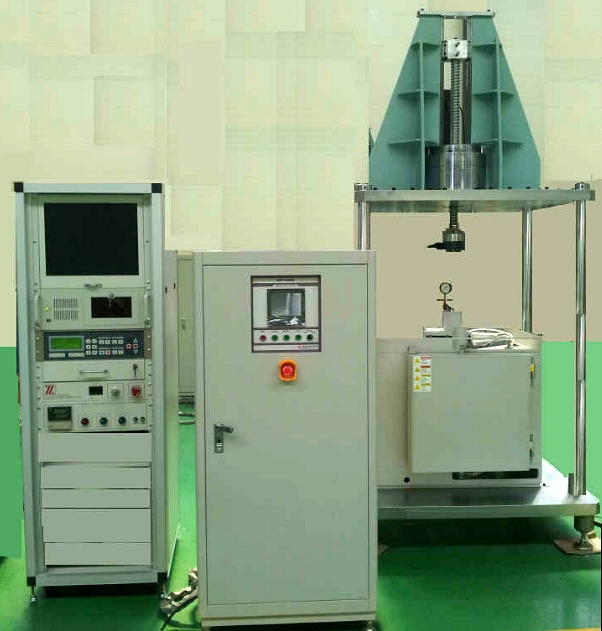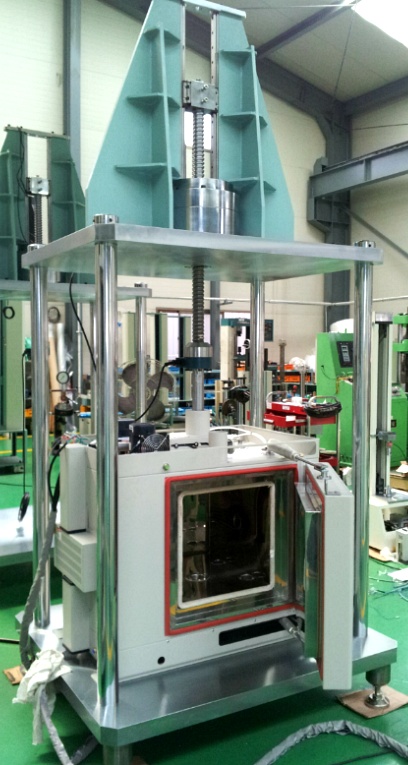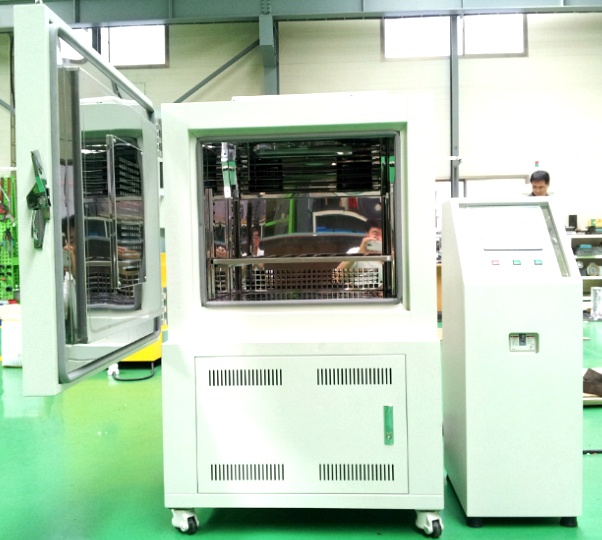   |
|
ISafety Eval!uation Test of Lithium-ion Battery Mainly test the battery safety performance subject to external damage, containing electrical tests (including room and high temperature short circuit, overcharge and forced discharge tests) and mechanical tests (including crush, nail, shock, heavy impact, vibration, drop, etc); equipped with high temperature short circuit test box, battery heat shock test box, battery incinerator, heavy impact device, crush test machine, nail test machine, drop test machine, etc.
Test Item
1) Heavy Impact Test DeviceAnalog heavy impact placed on cell or battery.
2) Crush Test machineAnalog of cell or battery subject to external crush, The force for the crushing is to be applied by a hydraulic ram with 32mm diameter position. The crushing is to be continued until force of 17.2Mpa. Once the maximum pressure has been obtained it is to be released. 3) Nail Test MachineAnalog of cell or battery subject to external short circuit. Nail speed, nail force and nail time are adjustable. 4) Drop Test Machine:The maximum weight of the tested is 2kg with drop height 300-500mm (adjustable). Multi-site and multi-angle drop is supported. It is applicable to the drop test of battery, mobile phones, electronic dictionary and other mini consumer electronics and their parts
Test Item
The nail penetration testing machine was devised in order to apply to a large-scale cell. By setting the lithium-ion battery into the nail penetration test container and substituting inside the container with inert gas, it is possible to perform the test without generating ignition by generated gas. The sliding part with high airtightness so as to prevent gas leakage from the nail penetration part or suctioning of air, and the buffer tank to rapidly collect the generated gas were designed and manufactured. Since all the generated gas can be collected, it is possible to eval!uate the thermal decomposition process and generation of minute amounts of hazardous gas. Observation windows are provided in two directions on the container to facilitate its internal observation. Further, measurement of variation in voltage and temperature of the battery due to internal short circuit was made possible via the airtight flange. As a result of various safety countermeasures, tests of the large-scale electric cell became possible
Design of test equipment
If internal short circuit occurred in a cylindrical cell with the standard 18650 size (18 φ × 65 mm, average voltage of 3.7 V, capacity of 2 Ah), energy of max. 27 kJ is discharged, and it
can result heat generation, liquid leakage, smoking, burst, ignition, etc. In order to eval!uate an abnormal event due to internal short circuit, the nail penetration test is applied in which a cell is penetrated by a conductive nail with the predetermined speed, and the voltage, temperature, gas generation, etc. are measured. As a nail penetrates, short circuit occurs between a positive electrode and a negative electrode while the nail acts as a conductor and |
.